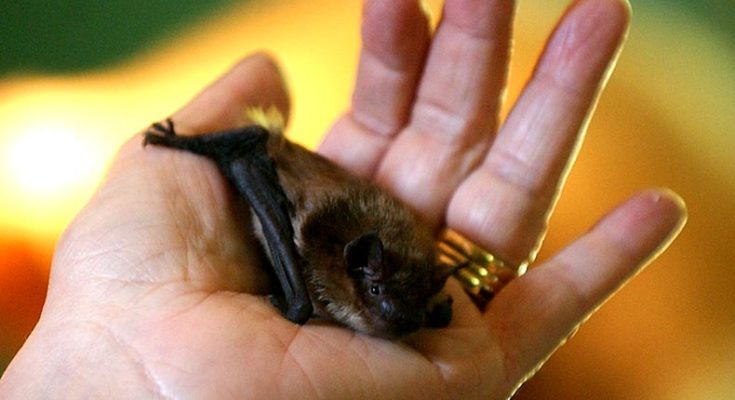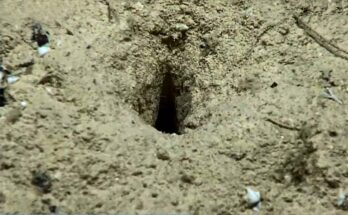Bats are not at all responsible for Coronavirus pandemic. Image Courtesy – https://www.zocalopublicsquare.org
Corona outbreak started in December 2019 at Wuhan of China, but still, people are in the dark regarding the source of the pandemic. However, it was reported that the infection started to spread from a seafood market where bats, pangolins were being sold. Since then, bats and pangolins are on the target as per the information that was placed by the govt. of China.
Here are some explanations from the scientists who research on Bats:
Around 64 bat experts from 6 South Asian countries explained that the SARS-COV-2 virus was not transmitted from the bats. The bat experts also told that Covid-19 is a mutated form and the level of mutation is similar to 40 years. The source of this virus is still unknown and need to be found out.
Scientists were divided over the origin of the novel coronavirus, a global epidemic. When the virus first surfaced from Wuhan’s ‘Wet Market’, a section of scientists claimed that the virus had spread from wildlife to humans.
At first, the idea was made that this deadly virus came from the bats. But most scientists believe that bats are not the source of the new coronavirus, SARS-COV-2. Scientists also say that bats are less likely to spread the virus directly to humans. Even the virus that is found in bats is not the killer virus like SARS-COV-2.
Read: Solar energy powering US
Then the question arises if there is an ‘Intermediate Reservoir’, not just a bat, it could be a pangolin. This is because both bats and pangolins have viral genes in their bodies that resemble SARS-COV-2. But pangolins also don’t usually come into contact with humans unless there is smuggling or some other reason. So what is the real source of SARS-COV-2? The exact answer to this question is still beyond the reach of the scientists.
Experts on bats (Chiroptera) and small bats (Pipistrellus Coromandra) in South Asian countries say that there is no point in targeting bats to be responsible for this deadly virus. Because bats (Chiroptera) and small bats (Pipistrellus Coromandra) have a lot of contribution to the ecosystem. Starting from pollination of flowers, propagation of seeds, reproduction of trees to the destruction of harmful insects. Bats are deliberately blamed for the deadly virus, which may lead to a mass killing of the animal in many countries, causing major damage to the ecosystem. Around 64 bat experts from various institutes and science research firms in South Asia have expressed their views on the issue and appealed for bat conservation. They have also brought their research report in the limelight to show the cause why bats are not responsible for the corona pandemic.
Rohit Chakraborty, a scientist at the Leibniz Institute for Zoo and Wildlife Research in Berlin, Germany, said that the species of bat in which a virus like SARS-COV-2 has been found is called ‘Horseshoe Bat’ (Rhinolophus affinis). These bats do not come in contact with humans very much, or it does not spread any contagious disease. Rohit told that ‘RaTG13’ virus was found in a section of bats that had 96% similarity to the SARS-COV-2 viral gene. This has led many to believe that these bats are the carriers of the deadly virus. But that was not the fact.
There are many reasons for this. Rohit says that all viruses need a special carrier protein (Receptor Protein) to enter the human body. Analysis of the genome of the SARS-COV-2 viral strain has shown that the virus binds to a carrier protein called ACE-2 (Angiotensin-converting enzyme 2). But the ‘RaTG13’ viral strain found in bats cannot bind to this carrier protein. So, the viral strain does not know the technique of entering the human body.
Kasturi Saha, a scientist at the Indian Institute of Science, said that another reason was that the SARS-COV-2 did not come from the bats. It was estimated that the bat virus ‘RaTG13’ and SARS-COV-2 had the same origin some 40-60 years ago. That source might not be the bats it might be other animals also. The genes of these two viruses are similar because they evolved from the same predecessor. It cannot be said that the bat virus is actually SARS-COV-2 just looking at this match.
Read: Honey Bees can solve arithmetic problems better than many human
Rohit clarified the 3rd point – “these 40-60 years is a huge time for the virus, rather it takes a few seconds to replicate. Millions of virus genomes have been created there in so many years. It may be a fact that one of their genes has developed into a deadly form through gene mutation”. So, it cannot be confirmed that the source of the virus is the bats.
Scientists say that bats are carriers of 66 types of viruses. But there is no scientific evidence that bats are infecting humans with a virus. At the time of the ‘Nipah virus’, it was observed that the virus was transmitted from bats to humans through an intermediate carrier pig. There are 3 types of bats that carry the Nipah virus, including the well-known ‘Pteropus hypomelanus’. Apart from this, the direct role of bats in spreading epidemic is not known.
Kasturi, a scientist at Indian Institute of Science, says bats have a special role in pollinating Mahua Madhuca longifolia, Nepal’s Chiuri (Diploknema butyracea), a tree needed in remote areas. Fruit-eating bats are essential for the reproduction of mangroves and other trees. Cocoa growers in Indonesia and corn growers in the United States especially get benefited from the bats. Bats save millions of rupees on pesticides every year.
Scientists have a list of opinions:
(i) The source of the SARS-COV-2 virus, a member of the beta-coronavirus family, is unknown. Although similar to the virus found in bats, SARS-COV-2 is very different.
(ii) It is not possible for bats to spread the virus directly to humans. SARS-COV-2 does not spread from the faeces and urine of bats.
(iii) The bat coronavirus that was found in two bat species in South Asia by the Indian Council of Medical Research (ICMR) is also different from SARS-COV-2. Indian Flying Fox and the bats that eat fruit were found to have the Beta-Coronavirus in their bodies, but these two species of bats are not capable of spreading the virus, nor have they been known to harm humans. So, there is no reason to fear. This was stated by Dr Raman R Gangakhedkar, Head of the Epidemiological and Communicable Diseases, ICMR. Other ICMR scientists told the same thing later.
(iv) Every time there has been an epidemic of infectious viral disease, it has been observed that the lifestyle of human being and the intention to kill wildlife was found responsible for that. Humans are responsible for removing bats and pangolins from their habitats and bringing them into contact with other humans. Extensive smuggling, the killing of bats and pangolins for commercial purposes, changes in diet have been prime causes for this epidemic.
(v) Bats have a significant role in the ecosystem – pollination, tree breeding, crop protection from pests etc. Bats do not harm people but benefit them.
(vi) If bats are blamed for the deadly virus, bats (Chiroptera) and small bats (Pipistrellus Coromandra) will be killed in many places. This will completely upset the balance of the ecosystem.
(vii) With the help and initiative of the governments of all the countries in South Asia, a request is being made to start a special program for the conservation of bats so that people can come out of the misconception.
Conclusion: These valuable words from the scientists prove that a misconception has been created to point out bats or pangolins and to make them responsible for the deadly coronavirus. But, this kind of misconception will be wiped out if a proper thorough investigation is made so that nobody can create manipulated information for their vested interest.
Source: The Wall





